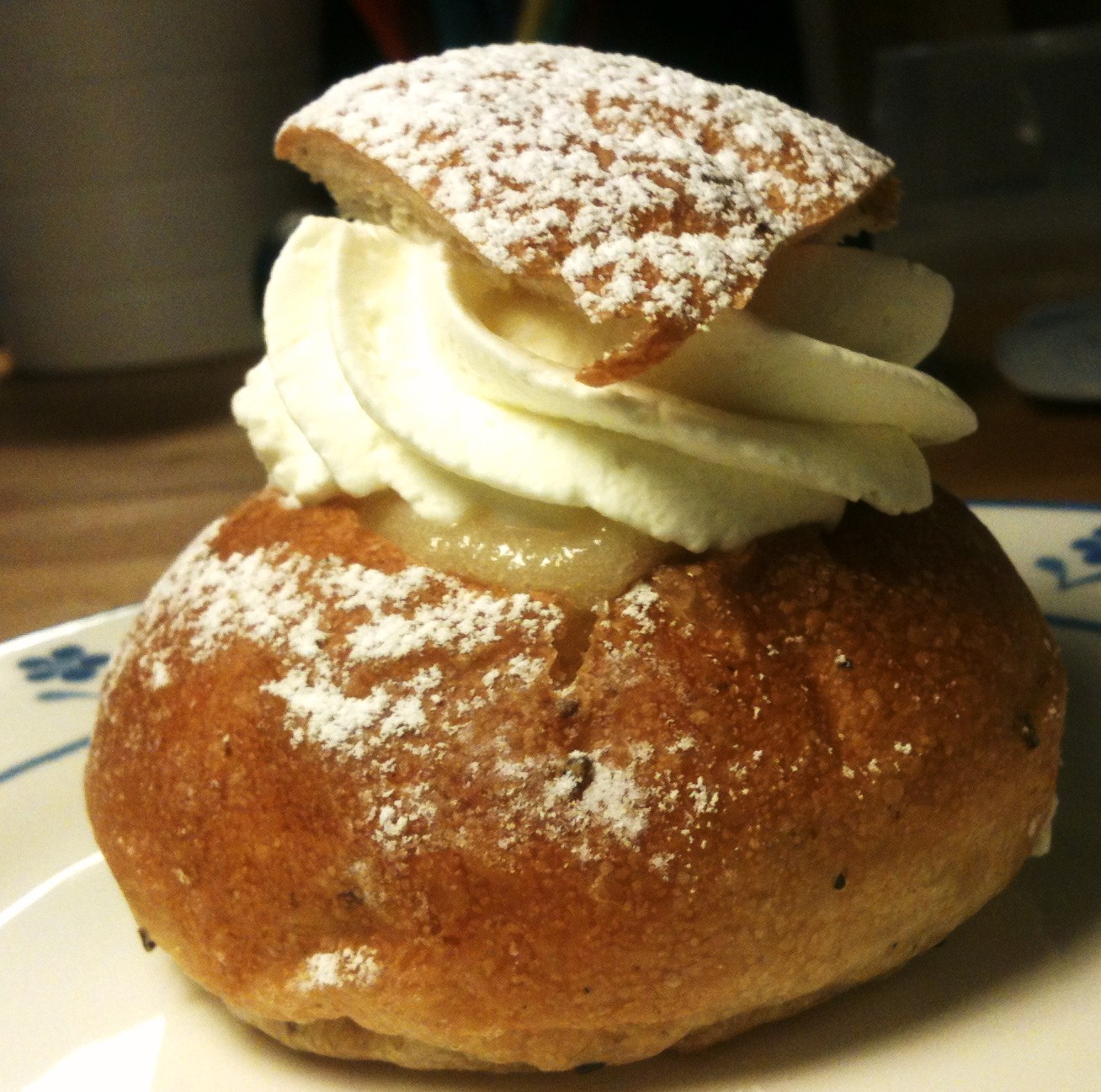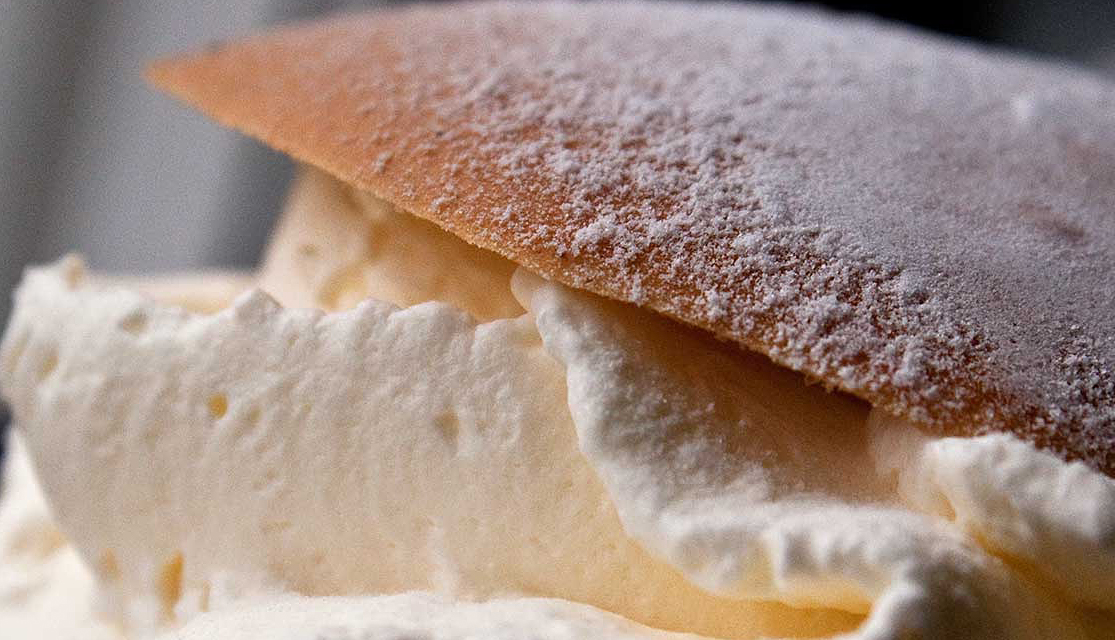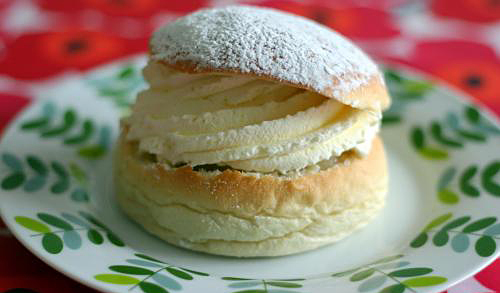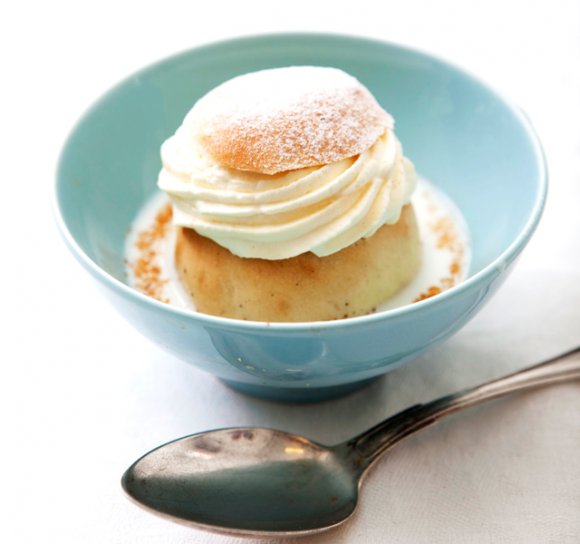The Swedish Semla
Whether you call it 'Fettisdag,' Shrove Tuesday, Fat Tuesday or Mardis Gras, if you're in Sweden (or anywhere in Scandinavia) you celebrate with a 'semla' or 'fettisdagsbulle.'
-
 Whether you call it Shrove Tuesday, Fat Tuesday or Mardis Gras, make sure you celebrate with a semla.
Whether you call it Shrove Tuesday, Fat Tuesday or Mardis Gras, make sure you celebrate with a semla. -
-
They have been eaten already since January or December but no one can deny the lure of the semla ... traditionally eaten on Shrove Tuesday (this year February 13 and a day prior to Valentines Day) "Fettisdag" in Swedish (Mardi Gras or Shrove Tuesday in English) is a time to celebrate!
-
 They have been eaten already since January but no one can deny the lure of the semla ...
They have been eaten already since January but no one can deny the lure of the semla ... -
-
If you’re in Sweden (or anywhere in Scandinavia) you do it best with a semla. A semla or fastlagsbulle (Swedish), laskiaispulla (Finnish) or fastelavnsbolle (Danish and Norwegian) is a traditional pastry made in various forms in Finland, Sweden, Latvia, Norway, Denmark and Estonia, associated with Lent and especially Shrove Monday or Shrove Tuesday. Here's more on the Finnish semla tradition.
-
 If you’re in Sweden (or anywhere in Scandinavia) on Mardi Gras (fettisdagen in Swedish), celebrate by stopping by your local bakery to buy a semla. Or you follow our recipe and make your own.
If you’re in Sweden (or anywhere in Scandinavia) on Mardi Gras (fettisdagen in Swedish), celebrate by stopping by your local bakery to buy a semla. Or you follow our recipe and make your own. -
The name semla (plural in Swedish is semlor) is a loan word from German semmel, originally deriving from the Latin semilia, which was the name used for the finest quality wheat flour or semolina. In the southernmost part of Sweden (Skåne/Scania) and by the Swedish-speaking population in Finland, the pastries are known as “fastlagsbulle,” in Denmark and Norway they are known as “fastelavnsbolle” (“fastlagen” and “fastelavn” being the equivalent of Shrovetide). In Scanian, originally an Eastern Danish dialect, the feast is also called “fastelann.” In Finnish the pastry is known as “laskiaispulla,” in Latvian as “debeskūka” and in Estonian as “vastlakukkel.”
-
 hetvägg - semla with milk.
hetvägg - semla with milk. -
King Adolf Frederick of Sweden died of digestion problems on February 12, 1771 after consuming a meal consisting of lobster, caviar, sauerkraut, smoked herring and champagne, which was topped off by “hetvägg,” the king's favorite dessert. This was the sweet chosen to represent Finland in the Café Europe initiative of the Austrian presidency of the European Union, on Europe Day 2006. Swedish private detective Ture Sventon is famous for liking semlas.
-
Recipe for semlas (makes 12-15 buns)
1 stick butter
1-1/4 cups milk
4 cups all-purpose flour
50g dry yeast
1/2 cup sugar
1 tsp ground cardamom
1/2 tsp salt
1 egg
1-1/2 tbs baking powder -
Brushing:
1 egg, beaten -
Filling:
5 oz almond paste
Crumble bread
1/4 cup milk – or as needed -
Garnish:
1 cup whipping cream
confectioners' sugar for dusting -
Directions
Melt the butter and add the milk. Heat to 115˚F. -
Combine flour, sugar, salt, cardamom, baking powder and yeast. Add the egg and the milk mixture.
Knead the dough until smooth and elastic. Cover bowl and allow to rise in a warm spot for 30 minutes. -
Move the dough to a lightly floured surface and knead until smooth.
Form into round balls and place on a greased baking sheet. Cover and allow to rise until doubled for 35 to 40 minutes. -
Preheat the oven to 475˚F.
Brush the buns with beaten egg.
Bake in preheated oven for 5 to 10 minutes, until golden brown and the center has firmed.
Cool the buns on a cooling rack.
Cut of the tops of the buns, about 1/2 inch. Scoop out some of the center of the buns, leaving a shell of at least 1/2 inch thick.
Moisten the bread crumble with some of the milk in a bowl. Grate the almond paste coarsely and mix with the bread crumble until smooth.
Whip the cream to stiff peaks.
Fill each bun with a spoonful of the bread filling and pipe the whipped cream on top.
Replace the tops onto the buns and sift over confectioners sugar.
Eat semlor with coffee or tea or with warm milk also called “hetvägg.” -
Semlan has a long history in Sweden. One early Swedish King supposedly died after consuming too many of the delicious pastry... Time for a Semla
-
-
